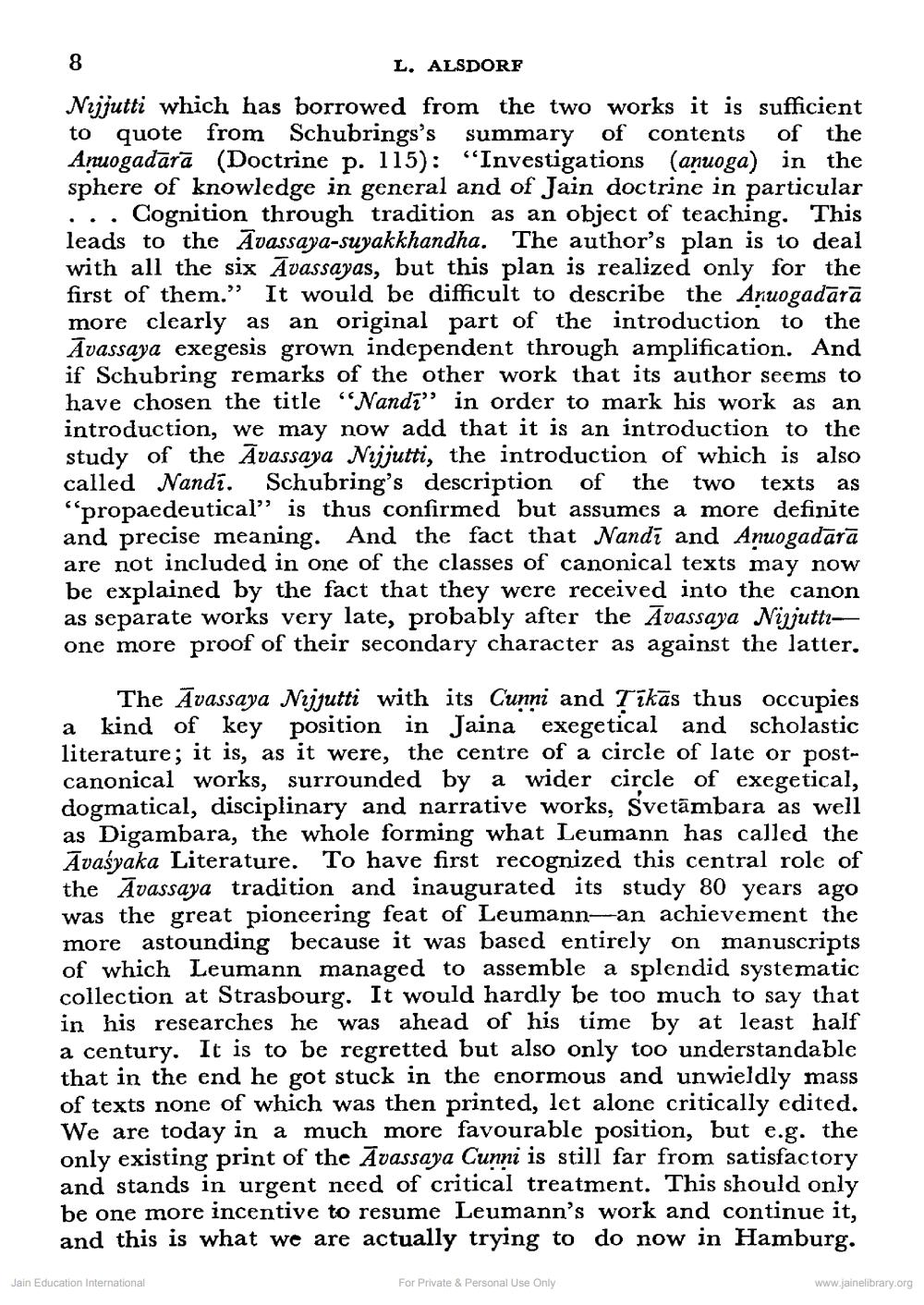________________
L. ALSDORF
Nijjutti which has borrowed from the two works it is sufficient to quote from Schubrings's summary of contents of the Anuogadārā (Doctrine p. 115): “Investigations (anuoga) in the sphere of knowledge in general and of Jain doctrine in particular ... Cognition through tradition as an object of teaching. This leads to the Avassaya-suyakkhandha. The author's plan is to deal with all the six Āvassayas, but this plan is realized only for the first of them.” It would be difficult to describe the Anuogadārā more clearly as an original part of the introduction to the Āvassaya exegesis grown independent through amplification. And if Schubring remarks of the other work that its author seems to have chosen the title "Nandi" in order to mark his work as an introduction, we may now add that it is an introduction to the study of the Avassaya Nijjutti, the introduction of which is also called Nandı. Schubring's description of the two texts as “propaedeutical” is thus confirmed but assumes a more definite and precise meaning. And the fact that Nandi and Anuogadārā are not included in one of the classes of canonical texts may now be explained by the fact that they were received into the canon as separate works very late, probably after the Avassaya Ninjuttione more proof of their secondary character as against the latter.
The Āvassaya Nejjutti with its Cunni and Tīkās thus occupies a kind of key position in Jaina exegetical and scholastic literature; it is, as it were, the centre of a circle of late or postcanonical works, surrounded by a wider circle of exegetical, dogmatical, disciplinary and narrative works, Svetāmbara as well as Digambara, the whole forming what Leumann has called the Āvašyaka Literature. To have first recognized this central role of the Avassaya tradition and inaugurated its study 80 years ago was the great pioneering feat of Leumann-an achievement the more astounding because it was based entirely on manuscripts of which Leumann managed to assemble a splendid systematic collection at Strasbourg. It would hardly be too much to say that in his researches he was ahead of his time by at least half a century. It is to be regretted but also only too understandable that in the end he got stuck in the enormous and unwieldly mass of texts none of which was then printed, let alone critically edited. We are today in a much more favourable position, but e.g. the only existing print of the Āvassaya Cunni is still far from satisfactory and stands in urgent need of critical treatment. This should only be one more incentive to resume Leumann's work and continue it, and this is what we are actually trying to do now in Hamburg.
Jain Education International
For Private & Personal Use Only
www.jainelibrary.org




